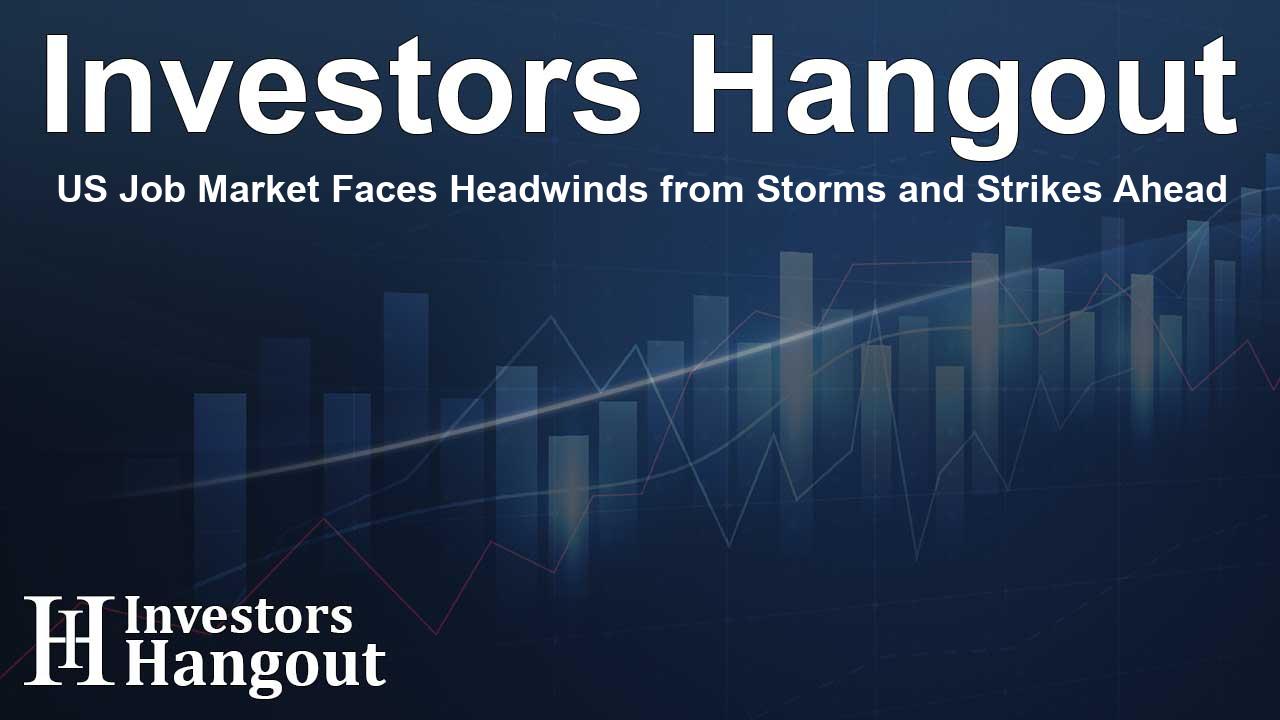US Job Market Faces Headwinds from Storms and Strikes Ahead

US Job Market in Transition Amid Natural Disasters and Strikes
The latest updates regarding the U.S. job market suggest that growth is experiencing notable challenges. Disruptions related to hurricanes and strikes are likely impacting employment numbers significantly. Leading into the elections, many are examining how these labor dynamics reflect on the economy's overall health.
Disruptions Impacting Job Growth
According to forecasts, the rate of job growth is expected to have slowed considerably as seasonal hiring is hindered by the impacts of Hurricane Helene and Hurricane Milton. These storms led to substantial disruptions in the Southeast and Florida, and their aftermath is weighing heavily on employment figures. Early estimates suggest that nonfarm payrolls added around 113,000 jobs last month, marking a stark decline from 254,000 in September, and it's the smallest increase we anticipate in the last six months.
Economist Insights on Employment Trends
Economists are weighing in on the potential fallout from these weather-related disruptions. Opinions vary on the numbers of jobs affected by the hurricanes, with estimates ranging notably. While salaried workers might maintain pay during shutdowns, hourly workers may not, impacting sectors such as restaurants and hotels more severely.
Strikes Contributing to Employment Challenges
In addition to natural disasters, significant strikes are occurring, with thousands of workers, including machinists at Boeing and Textron, participating. These actions are likely affecting overall payroll figures but indicate a determination from workers over pay and conditions. The situation is fluid, and many experts remain optimistic regarding potential short-term solutions that could mitigate job losses.
Forecasting Employment Stability
Despite these headwinds, many economists do not foresee a significant downturn in the labor market. A notable number of new applications for unemployment benefits have decreased, suggesting that a rebound in payrolls could be on the horizon for November. As we parse through the economic data, the ongoing adjustments companies are making may prove positive in retaining their workforce.
Labor Market Resilience in Focus
Even as conditions surrounding hiring are complex due to strikes and storms, some analysts believe that the underlying job growth rate remains healthy. Though fluctuations in unemployment may be forthcoming, they are not expected to affect the overall strength of the labor market remarkably. The workforce shows signs of stability energy, reflecting efforts to retain existing employees rather than shedding jobs.
Long-Term Economic Trends
In perspective, the labor market trends indicate a persistent strength despite current challenges. Analysts emphasize that maintaining employment figures within historical norms should inspire confidence among labor market participants and consumers alike.
Frequently Asked Questions
1. What major factors are affecting U.S. job growth currently?
The primary factors include disruptions caused by hurricanes and ongoing strikes, especially in the aerospace sector.
2. How many jobs are expected to be added in October?
It is estimated that around 113,000 jobs were added, notably fewer than in previous months due to these disruptions.
3. What impact do strikes have on payroll figures?
Workers participating in strikes may be counted as unemployed, which could negatively skew the overall payroll figures.
4. How does the unemployment rate factor into this analysis?
The unemployment rate was forecasted to remain steady at 4.1%, reflecting that most striking workers are likely still considered employed.
5. What are the long-term prospects for the labor market?
Economists are optimistic that the labor market will rebound, with ongoing changes in workforce management suggesting a healthy underlying growth trend.
About Investors Hangout
Investors Hangout is a leading online stock forum for financial discussion and learning, offering a wide range of free tools and resources. It draws in traders of all levels, who exchange market knowledge, investigate trading tactics, and keep an eye on industry developments in real time. Featuring financial articles, stock message boards, quotes, charts, company profiles, and live news updates. Through cooperative learning and a wealth of informational resources, it helps users from novices creating their first portfolios to experts honing their techniques. Join Investors Hangout today: https://investorshangout.com/
Disclaimer: The content of this article is solely for general informational purposes only; it does not represent legal, financial, or investment advice. Investors Hangout does not offer financial advice; the author is not a licensed financial advisor. Consult a qualified advisor before making any financial or investment decisions based on this article. The author's interpretation of publicly available data shapes the opinions presented here; as a result, they should not be taken as advice to purchase, sell, or hold any securities mentioned or any other investments. The author does not guarantee the accuracy, completeness, or timeliness of any material, providing it "as is." Information and market conditions may change; past performance is not indicative of future outcomes. If any of the material offered here is inaccurate, please contact us for corrections.









